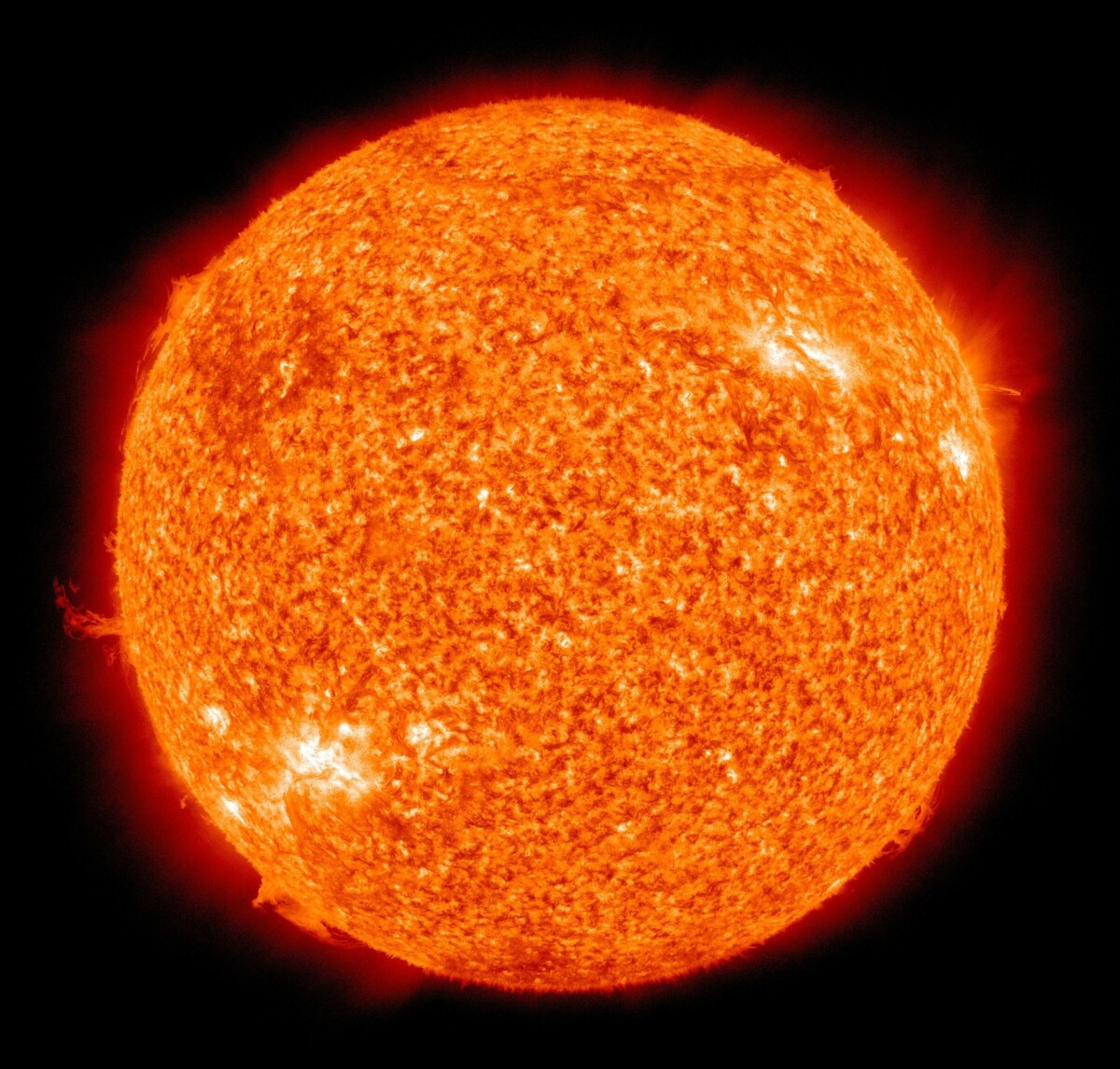The ‘ghostly’ neutrinos generated by our sun have long been elusive.
Our sun is a celestial body that we still learn a lot about. This is evident from a new study published in the prestigious trade journal Nature. Scientists have provided evidence for the occurrence of the so-called CNO cycle in our sun. How? By directly detecting the distinctive ‘ghostly’ CNO neutrinos generated during the fusion process.
How do stars generate energy?
Let’s start at the beginning. Because how exactly do stars generate energy? Stars are actually giant fusion reactors. Spontaneous fusion reactions take place as a result of the enormous high pressure and associated temperature. In these nuclear fusions, hydrogen is converted into helium. This process is also called ‘hydrogen combustion’. Basically it concerns two types of processes. On the one hand, there is the proton-proton cycle. Four hydrogen nuclei (protons) are converted into a helium-4 nucleus (alpha particle) in several steps. On the other hand, you have the carbon-nitrogen cycle, or the CNO cycle. Hydrogen is converted into helium with the help of heavier elements, such as carbon (C), nitrogen (N) and oxygen (O). The proton-proton cycle is one of two important groups of nuclear fusion reactions in fainter stars such as our sun. The CNO cycle is the main process of generating energy in heavier and warmer stars.
Neutrino’s
As with all fusion processes that take place within the sun, in addition to helium and the enormous amounts of energy that cause our sun and other stars to shine, countless neutrinos are also produced. Neutrinos are fundamental particles but do not interact strongly with normal matter. At the moment, they are traveling with billions through your body, without you noticing. “However, we are able to detect these neutrinos using the Borexino detector located about 1,400 meters underground,” says researcher Michael Wurm. “They give us a clear insight into the processes that take place in the core of our sun.”
More about the Borexino detector
The Borexino Detector is hidden deep in the largest underground laboratory in the world, the Laboratori Nazionali del Gran Sasso in Italy. The detector is one of the most sensitive neutrino detectors on Earth and has been studying solar neutrinos since 2007. At the heart of the Borexino Detector is a very thin, spherical nylon balloon containing 280 tons of special scintillator fluid. A neutrino interacts with this detector material a few hundred times a day. This then generates tiny flashes of light that are picked up by some 2,000 extremely sensitive sensors.
Scientists have been detecting neutrinos in recent years that arise from various reactions along the proton-proton cycle. But now, for the first time, researchers have managed to also uncover CNO neutrinos that are released in the CNO cycle. And that’s interesting. Because that means that inside our weaker sun also – to a minor extent – the CNO cycle occurs. Although this was expected, no direct proof of this has ever been provided. “Only the signature neutrinos can provide conclusive evidence for this,” says Wurm. “And we now have that evidence in our hands. No doubt.”
Flow
In addition, the research team was also able to estimate the total flow of CNO neutrinos reaching Earth. The researchers conclude that about 700 million CNO neutrinos fly through one square centimeter of our planet every second. While this may seem like a lot, it is only one hundredth of the total number of solar neutrinos. “This is consistent with the theoretical prediction that the sun’s CNO cycle is responsible for about one percent of the energy it produces,” adds researcher Daniele Guffanti.
The researchers consider the new results an important milestone on the way to a full understanding of the fusion processes that power not only our sun, but massive stars as well. In addition, it provides us more insight into the elements that make up the solar core; especially with regard to how often – in addition to hydrogen and helium – heavier elements such as carbon, nitrogen and oxygen can also be found in the solar plasma.
–
POPULAR ON SCIENTIAS.NL
Keep amazed ✨
Receive the most beautiful space photos and interesting popular science articles every Friday. Get the free Scientias Magazine together with 50,000 others.
–


